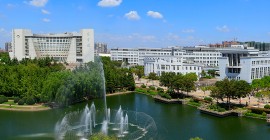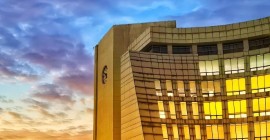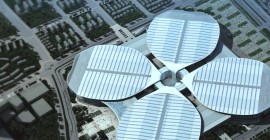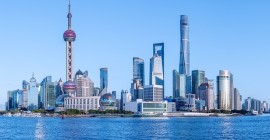Published on January 12, 2023, the article "Exhibition Industry Leads and Institutional Innovation - Thoughts Based on CIIE" is the latest column article written by Professor Zhang Min, Executive Director of Shanghai MICEE Institute and PhD supervisor at Shanghai University. It was published in the 33rd issue of Strait MICE Magazine on November 12, 2022.
The report of the 20th National Congress of the Chinese Communist Party (CCP), stressed upholding the central role of innovation in China's modernization drive. It proposed improving the sci-tech innovation system, accelerating the implementation of innovation-driven development strategy, establishing fundamental institutions that support all-round innovation, and promoting sci-tech innovation through institutional innovation. It also proposed improving market economy institutions like property rights protection, market access, fair competition and social credit system, steadily expanding institutional opening-up in areas like rules, regulations, management and standards, adhering to high-level opening-up, and accelerating the formation of a new development pattern.
As an open platform characterized by on-site gathering, contractual spirit and innovation incentives, the exhibition industry plays an irreplaceable role in China's style of modernization. However, the shifts of the times and the pandemic have posed unprecedented challenges of uncertainty for the exhibition industry. At this critical juncture, it is particularly important to maintain historical confidence and take historical initiative.
China's style of modernization is premised on reform and opening-up. The exhibition industry has played and will continue to play the role of an open platform during the reform and opening-up process. To provide high-quality services in the future, the industry needs to meet the challenges of personalized objects, globalized markets, high-end planning, digitalized expression and intelligentized operation based on sci-tech and institutional innovation. It should continue to promote the modernization of market entities, people and society amid reciprocal cycles and the modernization of production and life, and forge ahead in the great cause of national rejuvenation.

Reform and Opening-up Created World Miracle
China's rise and its opening economy generated unprecedented demand for the exhibition platform. The establishment of a socialist market economy provided institutional guarantees for the prosperity of the exhibition industry. In December 2001, China joined the World Trade Organization, requiring full opening-up of the exhibition industry. Since then, the industry started large-scale development, and has achieved a world miracle in the development of modern service industry over the past 20 years. The industry expanded from the Canton Fair taking the lead and contributing 50% of China's total foreign trade, to the first large-scale development and rapid growth since fully opening up in 2003. The national exhibition facilities reached 120 million square meters. More than 11,000 exhibitions were held annually, with over 150 million square meters of exhibition area. The annual revenue reached nearly 1 trillion RMB, driving nearly 10 trillion RMB of economic growth, with scale, efficiency and standards surpassing developed countries rapidly and achieving a world miracle in the growth of modern service industry.
At present, major exhibition cities in China have formed the Yangtze River Delta, Pearl River Delta and Beijing-Tianjin-Hebei exhibition city clusters, as well as the Northeast, Southwest, Northwest and Central exhibition city zones, Hainan and Hexi exhibition city areas, actively participating in the Belt and Road Initiative, inland opening-up, western development, central China rising, northeast revitalization, Yangtze River Economic Belt and other national strategies, strongly boosting innovation-driven development, transformation and upgrading, structural adjustment and China's style of modernization, and promoting the all-round opening-up and new round of reform between southeast coastal areas and inland regions.
Although not big in output value, the exhibition industry shoulders the historical mission of an open platform. It represents and leads the content, structure, direction and level of China's style of modernization by gathering industry brands, innovation and creativity, supply-demand interaction and rule endorsement. As it further promotes innovation-driven development, integrates into object industries and the world market, the industry will encounter the test of professionalized services, digital integration, market efficiency, branded IP and global competitiveness through technological, model, format and service innovations.
Research shows that globally, exhibitions remain the most important tool for business interaction. Although global economic growth has slowed down, the domestic and foreign exhibition industries are still moving forward amid twists and turns, upholding hope as the mainstream. The global exhibition industry presents a ladder distribution, with Europe still in a dominant position and emerging economies showing strong exhibition growth momentum. The "international eastward shift" and "domestic westward move" coexist, with a gradual transfer from developed countries and regions to emerging market economies. In recent years, China has steadily expanded its exhibition infrastructure and leads the world in exhibition projects and exhibition area, with rapidly improving exhibition capacity. However, gaps exist in first-class exhibitions, organizer strength and brand influence. There is still a long way to go from an "exhibition power" to an "exhibition strong power".
The Shanghai MICEE Institute focuses on the three factors of exhibition industry productivity to conduct industrial research and assess the exhibition strength of countries and cities based on public data, thus forming the Exhibition Blue Book, namely the research report on the dynamic evaluation of domestic and foreign exhibition industries, to provide a world map for the development of China's exhibition industry.
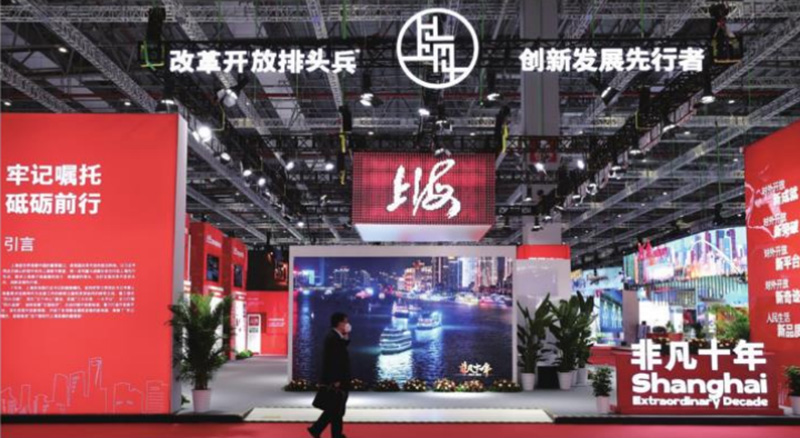
Leading Innovation in Production and Lifestyle
The way forward for exhibition industry development lies in integrating into object industries and the world market, and leading innovation in production and lifestyle. The original meaning of exhibitions is gathering for display and exchange. The core focus is on new, special and sophisticated exhibits that demonstrate innovation, creativity and creation across primary, secondary and tertiary industries. Exhibitors compete to showcase the innovative value of their products to gain market share. Buyers make full comparisons and in-depth investigations of innovative products showcased on site to pursue optimal price-performance ratio. Exhibition highlights thus become the focus of showcasing innovative products and on-site market competition, forming the lifeline for the survival, development, gains and losses of exhibition activities.
As a content industry, the exhibition industry requires organic integration with object industries in the process of serving them, pursuing inter-promotion and co-prosperity. The industry's absolute dependence on economic and social exchange, and its inherent integration with the development of object industries, determine the segmentation and specialization of the exhibition sector based on industries, such as auto shows, air shows, machine tool shows, coating shows, art expos, jewelry shows, film festivals, advertising festivals, fashion shows, musical instrument shows, food shows, etc.
As an open platform, the exhibition industry leverages the cross-regional gathering of resources to form market-based communication services. Its direct communication, full competition and innovation incentives with low-cost, high-efficiency nodal concentration determine the irreplaceability of the exhibition platform. Exhibitions serve large-scale cooperation in human society. The universality, specificity and diversity of such cooperation determine the professionalized demands from all industries and sectors for exhibition activities. Meanwhile, exhibitions' demand for market openness and economies of scale guide the industry from inter-city and provincial levels towards international and global scope.
It is precisely because exhibitions take new, special and sophisticated highlights as the lifeline, and integrate into object industries and the world market, that they have been leading innovation in production and lifestyle as a market-based platform around the innovative achievements across industries and sectors, as well as the optimal matching with object industries and the world market, since the advent of industrial society.
For instance, World Expos, starting from the 1851 London Great Exhibition, have long focused on technological and institutional innovation, and are committed to organizing and promoting modern production and lifestyles by showcasing and spreading modern technology, modern markets, modern education, modern medicine, modern transportation, modern architecture, modern catering, modern clothing, etc.. Major exhibits include the Crystal Palace, Eiffel Tower, steam engine, electric motor, trains, cars, ships, airplanes, ports, airports, gas stations, banks, exchanges, telephones, telegraphy, movies, TV, theme parks, supermarkets, fast food restaurants, and so on. Hence there is a consensus in the exhibition industry that "everything starts from World Expos".
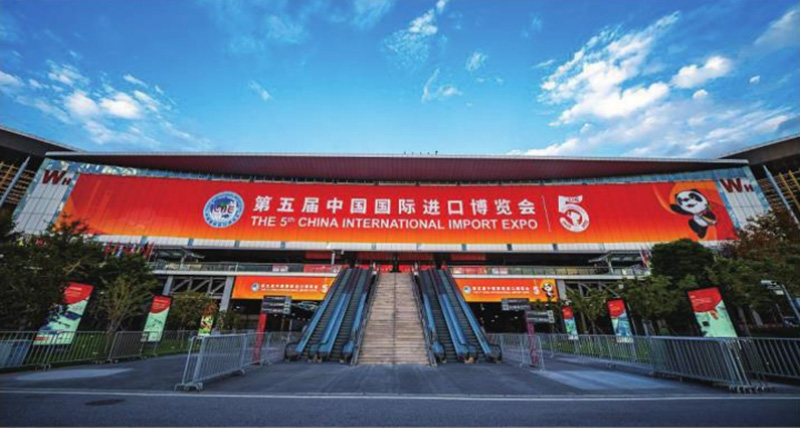
Institutional Innovation Unleashes Market Vitality
The way forward for the exhibition industry lies in integrating into object industries and the world market, and leading innovation in production and lifestyle. The original meaning of exhibitions is gathering for display and exchange. The core focus is on new, special and sophisticated exhibits that demonstrate innovation, creativity and creation across primary, secondary and tertiary industries. Exhibitors compete to showcase the innovative value of their products to gain market share. Buyers make full comparisons and in-depth investigations of innovative products showcased on site to pursue optimal price-performance ratio. Exhibition highlights thus become the focus of showcasing innovative products and on-site market competition, forming the lifeline for the survival, development, gains and losses of exhibition activities.
High-level opening-up involves comprehensive and multi-field in-depth opening-up, requiring reliance on China's super large market advantages to attract global resources and elements, enhance the linkage between domestic and international markets and two types of resources, improve the quality and standards of trade, investment and cooperation, and steadily expand institutional opening-up in areas like rules, regulations, management and standards.
Exhibition platforms are essentially B2B markets. The exhibition industry's promotion of technological innovation relies on institutional innovation unleashing market vitality. In this sense, grasping innovation means grasping fundamentals, and seeking innovation means seeking fundamentals. Judging from recent exhibition industry development, especially CIIE, institutional innovation has significantly unleashed market vitality.
At the national level, in support of CIIE, relevant departments have reformed and improved customs systems, continuously cutting taxes and fees and improving trade facilitation. Import costs have been effectively reduced. Ahead of the first CIIE, China cut import tariffs eight times in a row. Since January 1, 2020, it has implemented provisional import tax rates lower than MFN rates for over 850 commodities, striving to bring in more high-quality global goods at lower prices directly to domestic consumers and meet the growing needs for a better life.
For example, innovation in import regulation. To optimize the port business environment, the number of documents for import and export supervision and inspection was reduced from 86 to 44, significantly lowering customs clearance costs. In 2020, the overall customs clearance time for China's imports and exports was reduced by 64.04% and 84.87% respectively compared to 2017.
Take the opening-up of services industry. The financial sector announced over 50 measures to steadily expand opening-up, completely removing foreign shareholding restrictions in banking, securities, funds, futures, and personal insurance, continuously expanding the business scope of foreign financial institutions, and steadily raising the reciprocity of capital markets. Meanwhile, intellectual property protection has been strengthened continuously, and the market-oriented, law-based and internationalized business environment improved, with relaxed foreign investment access and a shortened negative list, and improved investment promotion and protection mechanisms and reporting systems.
Within Shanghai, CIIE has spawned cross-departmental supervision innovation, represented by the Integrated Bonded Exhibition Hall, turning exhibits into commodities and energizing imports. The Integrated Bonded Exhibition Hall integrates bonded display, commodity trade, logistics warehousing and customs clearance services. For traders, bonded trading has formed two major advantages over dutiable trading: first, duty payment is postponed to after sales instead of prepayment, easing capital occupancy; second, unsold exhibits can be returned to bonded warehouse for re-shipment elsewhere, turning "dead stock" into "live stock". For example, the popular Hokkaido rice "Yingqi Xing" at the first CIIE saved importers 10% in total price through distributor collection and month-end duty payment, passing the savings to end consumers.
In addition, the trading platform exercises qualification access and exit mechanisms to monitor brand and product quality; and provides "rent-free" bonded warehouses and duty collection based on sales price to save logistics and capital costs for enterprises. In the first phase, the platform has attracted over 50 countries, 400 brands and 8,000 commodities. The second-phase bonded logistics center has also been put into use.
Innovation in inspection and verification systems. Shanghai implements overseas pre-inspection and pre-classification systems for CIIE new product releases, attracting companies to choose Shanghai as the global launch site for new products and premium brands, and the clustering site for original brands. Clear criteria have been formulated for new product releases and first flagship stores, which are included in Shanghai's "Key Trademark Protection List" for enhanced trademark protection. Green channels are provided in timing, location and method for the commercial promotion of internationally renowned brands to support building Shanghai as the global launch site for new products. Statistics show that from January to October 2018, a total of 2,890 well-known brands held new product launch events in Shanghai, doubling the previous year.
Meanwhile, riding on CIIE's momentum, Shanghai Municipal People's Congress successively promulgated China's first provincial legislation on exhibition industry and first provincial legislation on exhibition projects, providing systemic frameworks and legal guarantees for the high-quality development of the exhibition industry.
One is the Exhibition Industry Regulations. The Regulations took effect on May 1, 2020 after adoption by Shanghai Municipal People's Congress. It provides comprehensive legal support for promoting exhibition industry development in aspects like optimizing business environment, empowering industry growth, strengthening services and security, and organizing CIIE successfully.
Two is the CIIE Regulations. The Regulations took effect on October 1, 2022 after adoption by Shanghai Municipal People's Congress. It combines outcome solidification with breakthroughs and improvement, and provides legal guidance, norms and guarantees on exhibition organizing, services and security, integrated effects, etc. to ensure solid work in better organizing each CIIE under the law and "make it better and better".
CIIE has been held for five consecutive sessions. It has steadily entered the world's top 100 exhibitions in overall scale and market influence. Despite the shifts of the times and the pandemic, it has injected new impetus into globalization and the world economy. The 5th CIIE attracted 284 Fortune Global 500 companies and industrial leaders, exceeding the previous session, with a repeat exhibitor rate of nearly 90% and a special decoration rate of 96.1%, both higher than last year. The intended turnover reached US$73.52 billion, up 3.9% year-on-year.
By the end of the 13th Five-Year Plan period, Shanghai had basically built itself into an international exhibition city. During the 14th Five-Year Plan period, it will be fully built into an international exhibition city. China's high-quality exhibition development will see Shanghai playing a bigger role going forward.
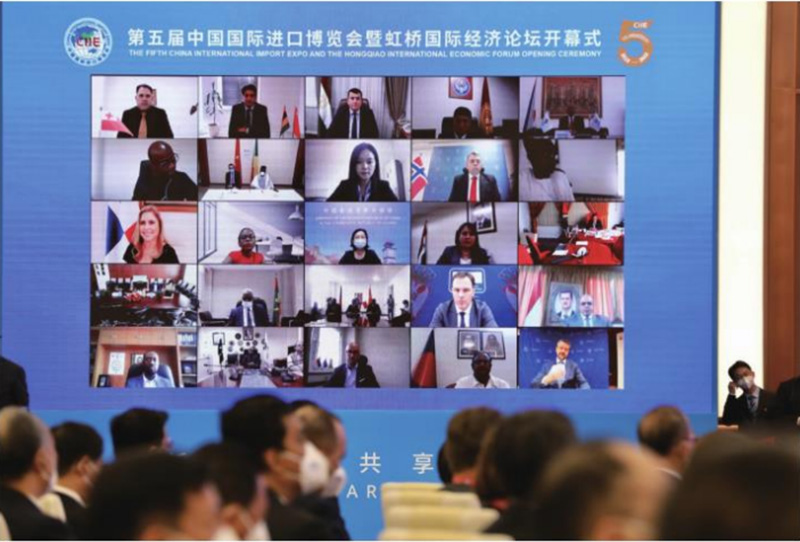
The interactive mechanism needs to be explored
The exhibition industry is a market-oriented platform for human society to achieve intermediate transactions. Through targeted invitations, cross-regional gatherings, competitive displays, diversified choices, cognitive interactions, decentralized decision-making, and periodic hosting mechanisms, it facilitates large-scale cooperation in human society. Here, we find that human cooperation is often centered around technological innovation and institutional innovation, and fundamentally inseparable from institutional frameworks and legal guarantees. The complete content driven by innovation includes both technological innovation and institutional innovation. Between exhibitions and innovation, there is an objective interaction effect.
Institutional economics believes that institutional innovation is an important driving force for economic growth. If social groups find that existing institutions cannot promote economic and social development, they will inevitably brew new institutions. Otherwise, the economy will stagnate. Institutional equilibrium is temporary and conditional; institutional innovation is fundamental and inevitable.
The essence of institutional innovation is to reform old institutions and form new ones, thereby balancing institutional supply and demand. The core issue studied by institutional economics is the influencing factors and specific processes of institutional innovation, that is, institutional change. Humankind can achieve institutional innovation through conscious activities based on the needs of social development. For example, the holding of the China International Import Expo not only expanded the innovation promotion role of import trade, but also promoted policy innovation in areas such as industrial policy, intellectual property rights, and trade facilitation, driving institutional innovation from point to surface towards a systematic integrity.
In summary of historical experience, the rise of great powers and national competition almost without exception rely on the tools of exhibitions. The glorious Victorian era in the UK was marked by the 1851 London World Expo, which then formed the World Expo system. The rise of the United States has hosted 13 World Expos, 4 Olympic Games and countless major events, including the establishment and operation of the United Nations General Assembly and its professional committees, the Security Council, the World Trade Organization, the International Monetary Fund, the World Bank, and thus established the post-war international political, economic, cultural, diplomatic and financial order.
The development and prosperity of China's exhibition industry relies on the huge and rapid demand generated by the economic and social development since reform and opening-up on the one hand, and on the other hand on the legal system guarantees provided by the socialist market system. At the same time, exhibition activities have also promoted the modernization process of production and lifestyle, driving institutional innovation in the exhibition industry as a leading modern service industry.
With a high level of opening up to the outside world, it is necessary to properly handle the relationship between exhibition leadership and institutional innovation, and continuously advance China's modernization in the benign interaction between the two.

